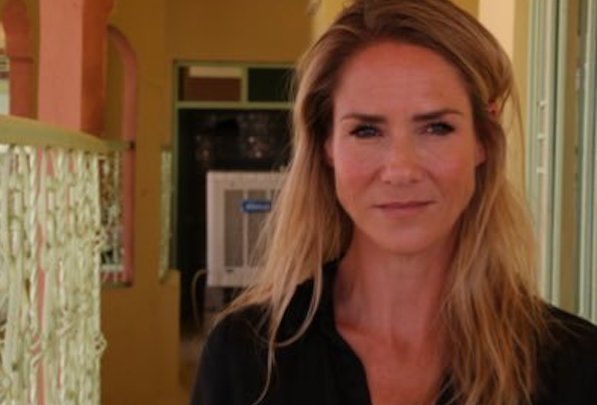In Vanuatu, the monster Category Five storm Tropical Cyclone Harold left 35 per cent of the population living in evacuation centres and temporary accommodation. This has led to high levels of stress and negative coping behaviour which risks exacerbating already high levels of gender-based violence and child abuse.
More than one month on, there is still a desperate need for food, water and shelter.
Some communities have been left without a single house standing and thousands of people are still living in crowded evacuation centres.
In 2015, I was part of the global response to Cyclone Pam. The catastrophic cyclone tore through the middle of Vanuatu.
A giant axe splitting the island nation in two.
Schools, hospitals, homes, and lives were decimated. At the time it was hard to imagine anything worse.
Yet here we are.
Cyclone Harold’s impact has been brutal. By all accounts it has been worse than Pam.
In normal times Save the Children would have launched an appeal and the disaster would have been front-page news.
Generous Australians would have rallied like they did with Cyclone Pam.
Like we always do.
But we obviously aren’t in normal times.
Harold might be the first big disaster to strike since the pandemic was declared, but even if we just have a ‘normal’ year, things are going to be bad.
According to the World Health Organisation, in a normal year, natural disasters kill approximately 90 000 people and impact around 160 million people.
As our warming planet increases the frequency and intensity of disasters, the world is not prepared for an average year, let alone an extraordinary one.
Our own mega fires were only completely snuffed out in March this year.
During this time, Australia learnt firsthand the importance of aid and assistance when the world opened its heart and its purse strings.
We welcomed firefighters from around the world.
Our Pacific neighbours dug deep. The Vanuatu government committed 20 million vatus (almost $250,000) to assist Australian bushfire victims.
Despite good intentions, Australia has only provided a fraction of the support we offered after Pam.

Photo: Luke Ebbs / Save the Children
Emergency response 101 is that delays cost lives.
Under the shadow of COVID-19, rushing the response could cost more. Lifesaving supplies have been delayed because they must be quarantined.
The good news is that the spread of the Coronavirus is still relatively low across much of the Pacific and there is yet to be a reported case in Vanuatu. Local government, communities, the private sector and the international community already in Vanuatu are rallying together to lead the response.
The bad news is the virus is still impacting every aspect of life in Vanuatu; from the decimation of the tourism industry to Vanuatu’s limited ability to access the supply chain of essential materials. The risk of bringing in foreign aid workers who may bring COVID-19 to the country is too high.
I know firsthand how difficult it is to run a humanitarian response, in one of the most logistically challenging environments in the world. And that was with open borders and lots of public donations.
Massive disasters require massive response efforts.
Vanuatu is used to hardship and nobody should underestimate their resilience.
After Cyclone Pam, there was El Nino which led to drought and the loss of seasonal crops. This was followed closely by Cyclone Cook, Cyclone Donna and the Manaro Voui volcano eruption.
Each time the Ni Vanuatu people have been able to build back bigger and better.
But the small disasters are becoming more frequent and the bigger ones are getting worse. Although we are fighting a battle on our own shore, we can’t forget about our friends in the Pacific, who helped us in our time of need.
The first step is to stop ignoring their plight.
See Save the Children to donate.


